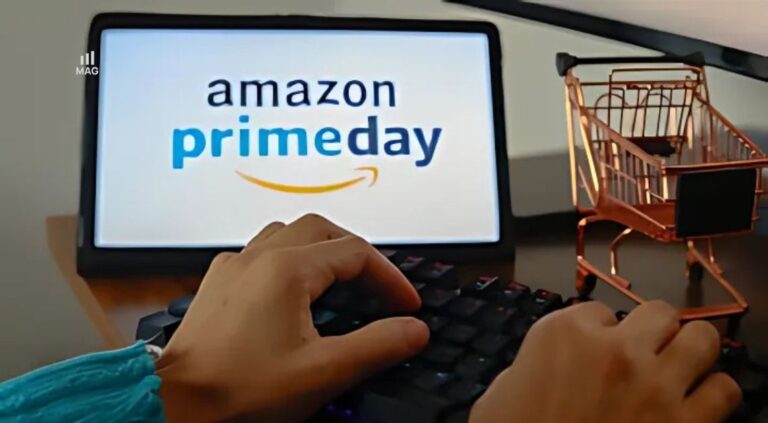
Amazon Prime Day 2025 is returning this July with major deals, but not everyone is jumping to shop.
Amazon has officially announced the return of its major shopping event, Amazon Prime Day 2025, this July.
Following a monumental 2024 event that saw a staggering 180 million shoppers in the United States alone generate 14.2 billion U.S. dollars in online sales, Prime members across numerous countries can again anticipate significant markdowns on a wide array of products, from popular brands to exclusive items.
This news arrives as some shoppers are actively reducing their Amazon purchases, a trend being called the “Amazon diet.” This contrast presents both a substantial opportunity and a crucial point of consideration for sellers on the platform.
Amazon confirmed this year's Prime Day
Amazon has officially confirmed that Prime Day 2025 will take place this July, offering Prime members access to some of the biggest deals of the summer. As reported on Amazon, the company promises deep discounts on trending items, popular brands, creator picks, and exclusive products.
Massive product coverage across 35+ categories
Shoppers can expect best Amazon savings across more than 35 categories, including:
Electronics (gadgets and accessories like airpods and headphones)
Kitchen
Beauty
Apparel
These deals to shop are designed to help members get a head start on Back-to-School shopping, with the added benefit of fast, free Prime delivery that avoids store crowds and long checkout lines.
Global expansion and new country added
Prime Day 2025 will be available in 25 countries, including the US, UK, Germany, Japan, and Brazil. Ireland joins the list for the first time, with members now able to shop Prime Day deals for their essentials and more through amazon.ie.
Strong performance in 2024 sets high expectation
Last year’s Prime Day sale event saw record-breaking results, with over 200 million items sold by independent sellers, who represent more than 60% of Amazon’s total store sales. Amazon also reached a major delivery milestone in 2024, fulfilling over 9 billion items with same-day or next-day shipping worldwide.
Prime members globally saved close to $95 billion on fast, free delivery in 2024. In the U.S., that translated to average savings of more than $500 per member, nearly four times the annual membership fee.
As Prime Day nears, some shoppers hit pause with an “Amazon diet”
As Amazon Prime Day 2025 approaches with major discounts and global fanfare, a quieter counter-trend is gaining attention: the “Amazon Diet.” In a recent Yahoo Life article, several shoppers shared their reasons for stepping back from Prime membership and reducing their Amazon purchases.
Amy, a mom from Minnesota, described how convenience led to excessive buying until she and her family canceled Prime last summer. Despite occasional exceptions, she says she hasn’t shopped “the Zon” (her nickname for Amazon) since January.
Other former Prime members cite a mix of factors, including environmental concerns, ideological objections, and the psychological impact of impulse buying.
Key reasons mentioned include:
Frustration with returns
Overconsumption and clutter
Ethical concerns about Amazon’s leadership
A desire to support local businesses
Julie George, a podcast host in Texas, said that moving cross-country forced her to confront the amount of unnecessary stuff she’d accumulated from late-night shopping sprees. Canceling her Prime membership, she noted, helped her cut back on impulse buys and rethink her spending habits.
The idea of an “Amazon diet” has also been explored by podcasters and influencers who once promoted frequent Amazon finds. While some shoppers are cutting back on their spending or stepping away from the platform altogether, Amazon Prime membership in the U.S. continues to grow.
As noted in our Amazon agency’s last article, 196 million U.S. customers held a Prime membership as of Q1 2025, a number that is still increasing, though at a slower pace compared to previous years.
Shoppers (might) still flock to Amazon Prime Day 2025
Despite growing awareness of overconsumption and tariff concerns, many shoppers (might) remain drawn to the promise of Prime Day. The combination of limited-time offers, fast delivery, and perceived value keeps customers engaged year after year.
Statista"Nearly 35 percent of U.S. consumers surveyed in 2024 found that Amazon Prime Day lived up to the hype.
Here’s why Prime Day continues to drive purchases:
Deep discounts & urgency
Major price drops on Amazon deals across top categories, like electronics, apparel, and household goods, fuel fast decision-making. Lightning deals and countdown timers create pressure to buy before time runs out.
Fast shipping & convenience
With same-day or next-day delivery, Prime members enjoy near-instant gratification. The ease of shopping from home without the hassle of crowds adds to the appeal.
Opportunity to buy “want” items
Many shoppers use Prime Day event as a chance to finally grab items they’ve been eyeing but haven’t splurged on. Best buy deals make those purchases feel justified and less indulgent.
Wide product selection
Amazon’s vast inventory ensures there’s something for everyone, from home improvement gear to trending gadgets to go on sale. This broad scope increases the chances of finding a deal worth jumping on.
Perceived value
Prime Day Amazon sale is heavily promoted as one of the best deal days of the year. This framing creates a sense of smart, strategic shopping, where snagging a bargain feels like a win.
These factors, paired with the ease of buying and the thrill of a time-sensitive deal, continue to compel millions to fill their carts, even as conversations around conscious consumption grow.
Actionable insights from last year's Prime Day for sellers
Amazon Prime Day 2025 is fast approaching, and sellers looking to maximize their results should review performance patterns from last year. According to Numerator’s 2024 Prime Day Highlights, valuable data from shopper behavior and category performance offer clear opportunities.
Here’s what stood out from 2024 and how sellers can act in 2025:
Know your Prime day audience
Prime Day attracts a slightly older, higher-income demographic compared to the typical Amazon shopper. Gen X buyers dominated in 2024, often entering the event with a purchase plan, highlighting the importance of pre-sale marketing and tailored messaging.
Target generational shopping patterns
Gen Z shoppers were more likely to wait for discounts on specific products, while Millennials leaned toward routine and bulk purchases. Sellers should craft marketing angles that speak to these preferences, like emphasizing urgency for Gen Z or convenience bundles for Millennials.
Capitalize on growing health & beauty demand
Health and beauty saw some of the strongest growth in 2024, with categories like skincare, vitamins, and hair care surging. Sellers in this space should expect increased competition and consider enhanced listing content, aggressive pricing, and sponsored campaigns.
Electronics decline, but big brands still win
Electronics saw reduced category engagement, but brands like Apple, Ring, and Amazon devices remained top earners in dollar sales. If you’re selling in this category, focus on your unique value or bundle deals to compete with major brands.
Price comparison is the new normal
More than half of Prime Day shoppers checked prices on other retailers before purchasing, especially at Walmart and Target. Competitive pricing, clear value messaging, and coupon use can help sellers win the final click.
Top performer example products
The Amazon Fire TV Stick topped the list for units sold, while Blink and Apple Watch led revenue. This indicates that affordability and brand trust still heavily influence purchasing decisions.
As 2025 approaches, sellers should plan early, lean into the data, and tailor their strategies by generation and category. Prime Day isn’t just about offering discounts, it’s about understanding buyer intent and standing out in a crowded marketplace.
Sellers prep smarter for Amazon Prime Day 2025!
US Amazon Prime membership continues to grow, giving sellers a wider audience, but profit concerns are shifting how they prepare. More sellers are now focusing on strategy and metrics over sheer volume, following a playbook shared by Jon Elder in his newsletter.
GrabOn"88% of Amazon Prime members shopped during Prime Day 2024 and an even higher percentage is estimated to take part this year."
Key tactics for sellers:
Pick your winners
Cancel deals on slow movers. Focus Prime Day discounts on your hero ASINs or use deals to boost BSR and reviews.
Plan ahead
Don’t trust Amazon’s FBA deadlines, ship 21 days early. June 9 is your last safe date for minimal splits.
Forecast conservatively
With Prime Day now four days long, sellers are multiplying last year’s sales by 1.2–1.5, not 2x. Amazon’s extended window may not drive double the sales.
Increase AOV
Launch physical and virtual bundles now. Virtual bundles help grow your review count and conversions.
Spend smart on ads
Skip daily bid tweaks. Boost ad budgets by 3–5x and taper spend gradually post-event to catch spillover traffic.
Polish your branding
If you sell U.S.-made products, highlight it across your storefront and images. Audit all creatives, especially hero images, to maximize CTR.
Sellers looking to gain a competitive edge can benefit from working with an experienced Amazon agency to execute these tactics effectively. With the right support, Prime Day becomes a springboard for long-term growth, not just a sales spike.






